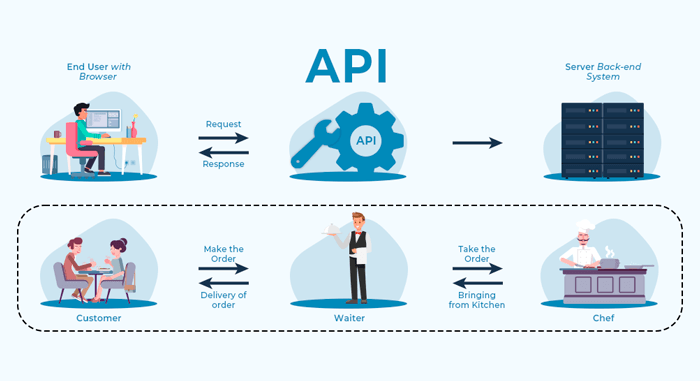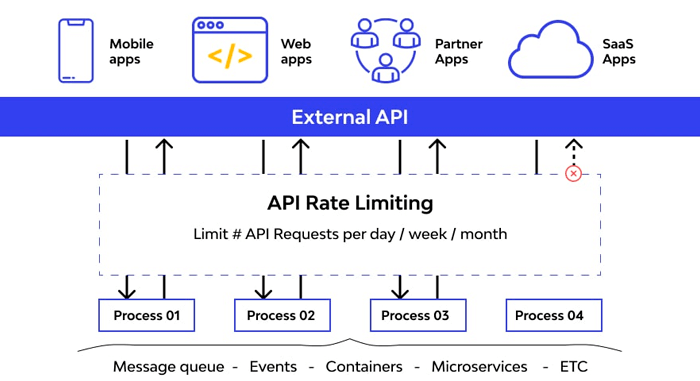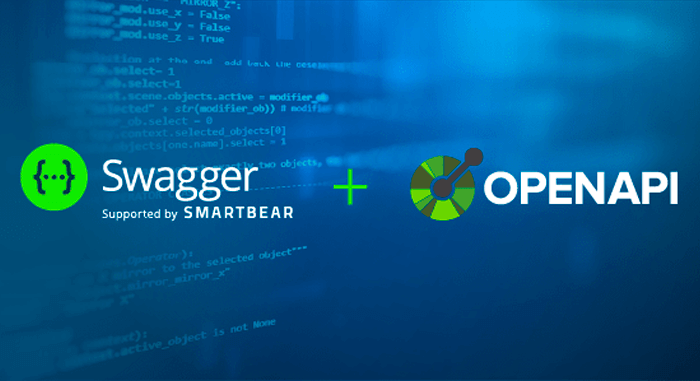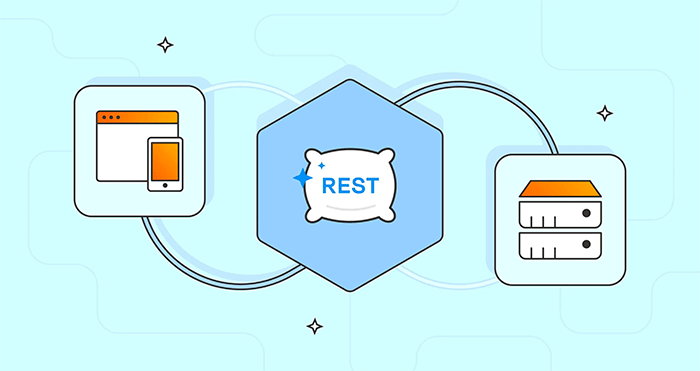API Versioning Strategies: Best Practices for Java Applications

API versioning in Java applications requires strategic planning using approaches like URI versioning, header-based versioning, or content negotiation, with the choice depending on client needs, backward compatibility requirements, and long-term maintenance considerations.
API Versioning in Java: Complete Strategy Guide
API versioning strategies determine how your Java applications evolve while maintaining backward compatibility with existing clients. As business requirements change and new features emerge, APIs must adapt without breaking integrations that depend on them. Choosing the right versioning approach from the start prevents technical debt and enables smooth evolution of your services over time.
Why API Versioning Matters in Enterprise Java
API versioning addresses the fundamental challenge of evolution in distributed systems. When you publish an API consumed by external clients, mobile applications, or partner integrations, you lose direct control over when those clients update. A breaking change can disrupt business operations, damage relationships, and create support nightmares.
Consider an e-commerce platform serving thousands of merchants through its API. Changing a field name from “price” to “amount” seems trivial but breaks every integration overnight. Versioning provides a safety net, allowing new capabilities while preserving existing functionality for clients unable to migrate immediately.
Core Versioning Challenges
- Maintaining multiple API versions simultaneously increases codebase complexity and testing burden
- Clients often delay migration, forcing long-term support of deprecated versions
- Documentation must clearly communicate differences between versions and migration paths
- Database schema changes require careful handling to serve multiple API versions from shared data
The cost of poor versioning strategy compounds over time. Teams spend increasing effort maintaining old versions, documenting workarounds, and troubleshooting version-specific bugs. Conversely, well-planned versioning enables rapid feature delivery while providing stability guarantees to consumers.
Java’s strong typing and mature ecosystem provide excellent tools for implementing versioning strategies. Frameworks like Spring Boot offer built-in support for multiple versioning approaches, while libraries help manage the complexity of serving different API versions from a single codebase.
URI-Based Versioning Implementation
URI versioning embeds the version number directly in the endpoint path, making it the most visible and straightforward approach. URLs like /api/v1/users and /api/v2/users clearly indicate version differences, simplifying client implementation and debugging.
Spring Boot makes URI versioning implementation trivial using path variables in request mappings. Controllers can be organized by version, with each version in its own package, or a single controller can handle multiple versions using conditional logic based on the path parameter.
Implementation Patterns
The separate controller approach creates distinct classes for each API version. UserControllerV1 and UserControllerV2 map to their respective URI paths, allowing independent evolution of each version’s logic. This separation provides clarity but can lead to code duplication when versions share significant functionality.
- Version-specific controllers enable complete independence and clear separation of concerns
- Shared service layer reduces duplication by keeping business logic version-agnostic where possible
- Request and response DTOs versioned separately allow schema evolution while maintaining compatibility
- Routing configuration centralizes version management and enables gradual rollout strategies
Advantages and Tradeoffs
URI versioning excels in clarity and simplicity. Developers immediately understand which version they’re calling by looking at the URL. Caching works naturally since different versions are distinct resources. API gateways and load balancers can route based on URL patterns without inspecting headers or content.
However, URI versioning has drawbacks. URLs proliferate as versions multiply, potentially confusing API consumers. Versioning violates REST principles that resource identifiers should remain stable over time. Search engine indexing becomes complex when multiple URL versions represent the same logical resource.
Despite theoretical objections, URI versioning remains popular in enterprise Java applications due to its pragmatic advantages. The approach works well for public APIs where simplicity and discoverability outweigh architectural purity concerns.
Header-Based Versioning Techniques
Header-based versioning keeps URLs clean by moving version information into HTTP headers. Clients specify desired version through custom headers like API-Version or standard Accept headers with vendor-specific media types. This approach maintains stable resource identifiers while enabling version control.
Spring Boot supports header versioning through the headers attribute in request mapping annotations. The framework inspects incoming request headers and routes to appropriate controller methods based on version specifications. This mechanism works seamlessly with content negotiation and existing HTTP infrastructure.
Custom Header Approach
Custom headers like X-API-Version or API-Version provide explicit version control. Clients include the header in every request, and the server routes accordingly. Missing headers can default to the latest version or return an error requiring explicit version specification, depending on your backward compatibility strategy.
- Custom headers keep URLs stable and semantically correct according to REST principles
- Middleware and filters can handle version routing before requests reach business logic
- Version negotiation happens at HTTP layer, separating concerns from application code
- Default version behavior must be carefully designed to balance convenience and safety
Content Negotiation Versioning
Content negotiation leverages the Accept header with custom media types. Clients request application/vnd.company.v1+json or application/vnd.company.v2+json, making version part of content type negotiation. This approach aligns perfectly with HTTP standards and RESTful architecture.
Implementation requires more setup but provides elegant integration with Spring’s content negotiation infrastructure. The framework already handles Accept headers for format negotiation between JSON and XML, extending this mechanism for versions feels natural and consistent.
Header-based versioning shines in scenarios prioritizing API elegance and REST compliance. The approach works particularly well for APIs consumed by sophisticated clients capable of managing headers effectively. However, testing and debugging become more complex since version information is less visible than in URLs.
Query Parameter Versioning Strategy
Query parameter versioning adds version information to the URL query string, such as /api/users?version=1 or /api/users?v=2. This approach balances visibility with URL stability, keeping the resource path clean while making version explicit in the full URI.
Spring Boot handles query parameter versioning naturally through request parameter binding. Controllers can extract version information and route internally, or use conditional request mappings based on parameter values. The implementation flexibility allows teams to choose approaches fitting their specific needs.
Implementation Considerations
- Query parameters maintain clean resource paths while providing visible version information
- Caching behavior requires careful configuration since query strings affect cache keys
- Default version handling when parameter is omitted needs explicit policy decision
- URL signing and security mechanisms must account for version parameter in calculations
Query parameter versioning represents a middle ground between URI and header approaches. It provides better visibility than headers while maintaining cleaner paths than full URI versioning. However, it shares some disadvantages with both approaches and may feel like an incomplete solution to purists on either side.
This strategy works well for internal APIs where teams control both client and server, allowing pragmatic choices based on specific use cases. Public APIs might find the approach confusing for external developers accustomed to more conventional versioning patterns.
Semantic Versioning for APIs
Semantic versioning applies the MAJOR.MINOR.PATCH pattern to APIs, communicating the nature of changes through version numbers. MAJOR changes break backward compatibility, MINOR adds features compatibly, and PATCH fixes bugs without adding features. This convention helps clients understand update implications at a glance.
Java APIs typically expose only the MAJOR version in endpoints since MINOR and PATCH changes maintain compatibility. Clients calling /api/v2 automatically benefit from compatible improvements without code changes. This approach simplifies client implementation while providing clear upgrade paths when breaking changes occur.
Version Number Strategy
Starting with version 1 rather than 0 signals production readiness and serious API commitment. Incrementing MAJOR versions sparingly reduces maintenance burden and upgrade fatigue. Each major version represents significant evolutionary step rather than minor convenience improvements.
- Major version increments only for breaking changes that justify client migration effort
- Minor version tracking internally helps teams understand API evolution over time
- Deprecation warnings in current version prepare clients for upcoming major changes
- Version support lifecycle communicated clearly sets expectations for migration timelines
Planning major version transitions requires careful change aggregation. Rather than releasing v2, v3, v4 in rapid succession, accumulate breaking changes and release substantial improvements together. This strategy respects client integration costs and maintains reasonable support burden.
Deprecation and Sunset Policies
Version deprecation marks APIs for eventual removal while maintaining temporary support. Clear deprecation policies protect clients from sudden disruptions while enabling codebase cleanup. Spring Boot applications can use custom headers, response metadata, or logging to signal deprecated version usage.
Sunset policies define timelines for removing old versions. Industry best practices suggest supporting at least two major versions simultaneously, giving clients adequate migration time. Public APIs often maintain three or more versions during transition periods, while internal APIs might move faster with coordinated team efforts.
Communication Strategy
Effective deprecation requires proactive communication through multiple channels. Release notes, documentation updates, email notifications, and in-response warnings inform clients about upcoming changes. Providing migration guides with code examples reduces friction and encourages timely updates.
- Deprecation warnings should appear at least six months before sunset for public APIs
- Usage analytics identify clients still using deprecated versions for targeted outreach
- Sunset dates announced clearly with justification and migration path documentation
- Grace period extensions considered for major clients facing legitimate migration challenges
Monitoring deprecated version usage helps teams understand adoption patterns and identify blockers preventing migration. High usage of old versions might indicate missing features in new versions or inadequate documentation rather than client laziness.
Removing old versions reduces technical debt but must be executed carefully with respect for client needs and business relationships. Balancing innovation with stability defines successful API program management in enterprise Java environments.
| Versioning Approach | Best Use Case |
|---|---|
| URI Versioning | Public APIs prioritizing simplicity and discoverability |
| Header Versioning | REST-compliant APIs with sophisticated clients |
| Query Parameter | Internal APIs needing visible versioning with clean paths |
| Content Negotiation | APIs serving multiple formats with strict REST adherence |
Frequently Asked Questions
Version your API from the start, even if you begin with v1. This establishes versioning infrastructure and client expectations before they’re critical. Retrofitting versioning after clients depend on unversioned endpoints is extremely difficult. Starting with version 1 signals production readiness and makes future evolution straightforward when breaking changes become necessary.
Support at least two major versions simultaneously for public APIs, allowing reasonable migration time for clients. Internal APIs with coordinated teams might maintain only one version with faster deprecation cycles. Supporting more than three versions typically indicates poor versioning strategy or insufficient communication about deprecation timelines. Balance client needs with maintenance burden carefully.
API evolution refers to making backward-compatible changes like adding optional fields or new endpoints without breaking existing clients. Versioning becomes necessary only when you must make breaking changes that alter or remove existing functionality. Good API design prioritizes evolution through additive changes, reserving version increments for truly breaking modifications that justify client migration effort.
While technically possible, mixing versioning strategies creates confusion for API consumers and increases maintenance complexity. Choose one primary approach and apply it consistently across your API surface. Exception might be using URI versioning for major versions while employing content negotiation for format variations, but even this requires clear documentation to prevent client confusion.
Use a version-agnostic database schema that supports all active API versions through careful column additions and transformations in the service layer. Avoid removing columns until all API versions requiring them are sunset. Employ database views, stored procedures, or service layer mapping to present version-specific data representations from a shared schema. Consider event sourcing for complex versioning scenarios.
Conclusion
API versioning strategy significantly impacts long-term maintainability and success of Java applications. URI versioning provides simplicity and clarity for public APIs, while header-based approaches satisfy REST purists and enable cleaner resource identifiers. Query parameters offer a pragmatic middle ground balancing visibility with path stability.
The best approach depends on your specific context including client sophistication, team preferences, and architectural goals. Semantic versioning principles guide version number management regardless of technical implementation. Clear deprecation policies and proactive communication protect clients while enabling necessary evolution. Starting with versioning infrastructure from day one, even at version 1, establishes foundation for sustainable API program growth. Success comes from choosing an approach that fits your organization’s needs and executing it consistently with respect for client integration costs and business relationships.




